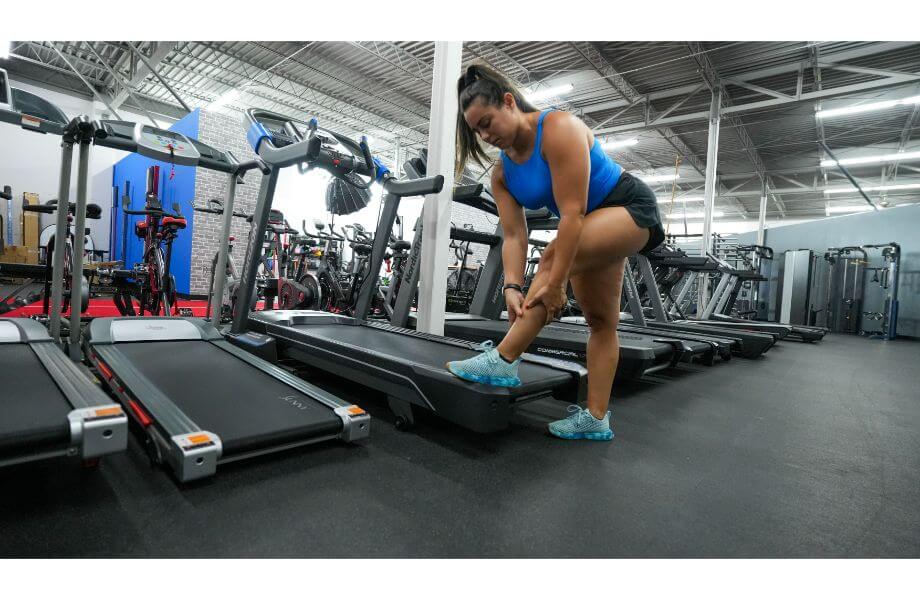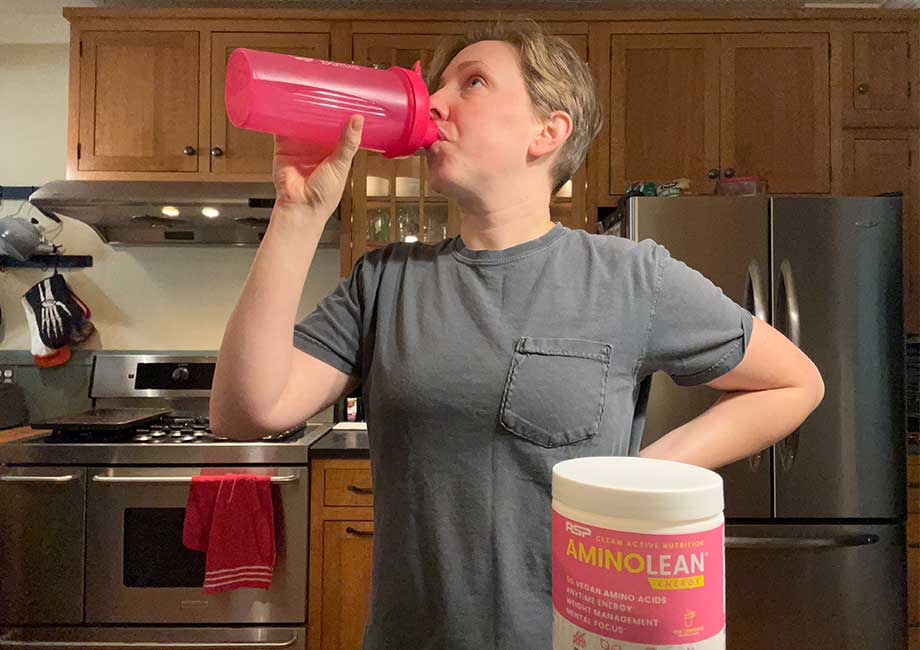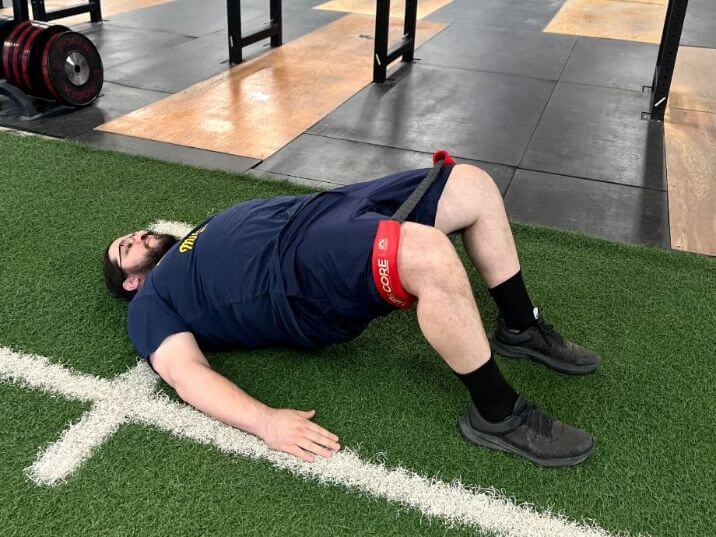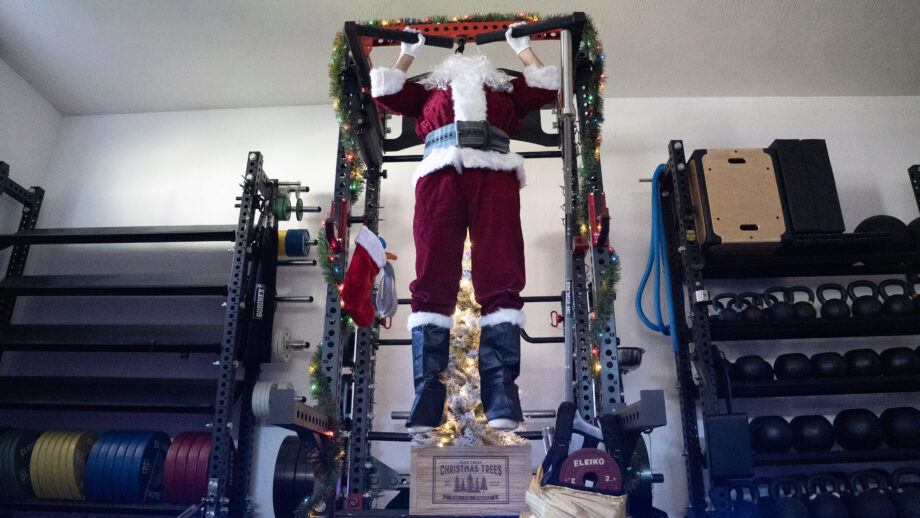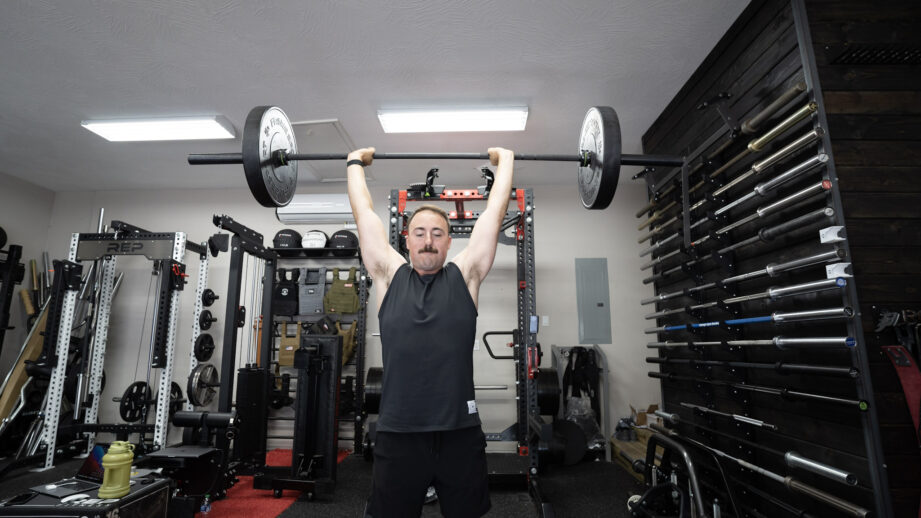More than just soreness in the lower legs, shin splints are one of the most common overuse injuries for athletes, especially new runners. Medically known as medial tibial stress syndrome, shin splints are caused by inflammation in the muscles near the shin bones and can be a real pain (pun intended) for runners. Whether you hit the pavement or log your miles on a treadmill, preventing shin splints is vital for successful training.
Treadmill running may not put the same muscle strain on your legs as outdoor running, but it doesn’t eliminate the risk of shin splints completely. Thankfully, you can take steps to reduce your risk of developing the dreaded shin pain. This article will take a look at common causes of shin splints as well as how to treat them and, most importantly, how to prevent shin splints on a treadmill in the first place.
What are Shin Splints?
Shin splints are more than just sore shin muscles—they result from inflammation in the lower leg and, if left untreated, can wreak havoc on your legs and your training schedule.
As an overuse injury, shin splints are a common pain among runners. Anterior shin splints are known for the soreness they cause on the front side of the shin, while posterior shin splints are known for the pain they bring to the back side of the shin. The bad news? Shin splints can be caused by several different factors. The good news? That gives us plenty of opportunities to prevent them, especially on a treadmill.
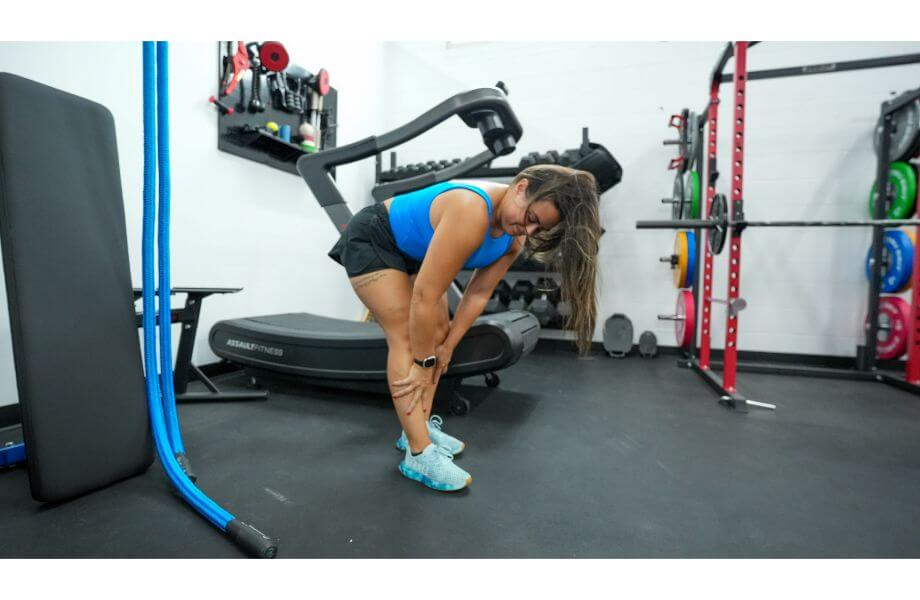
Symptoms of Shin Splints
If I had to guess, many of us have experienced shin pain for a time or two. If you’re dealing with shin splints, you may notice tenderness, soreness, or pain on either side of the tibia. You might also see some mild swelling in your lower leg. Sound familiar? At first, the pain may subside with a break from exercising, but if left untreated, it could persist and eventually develop into a stress fracture.
Causes of Shin Splints
The pain you feel from shin splints results from inflammation in the lower leg muscles, connective tissues, and tendons. This inflammation can be triggered by several factors including your choice of activity or running form.
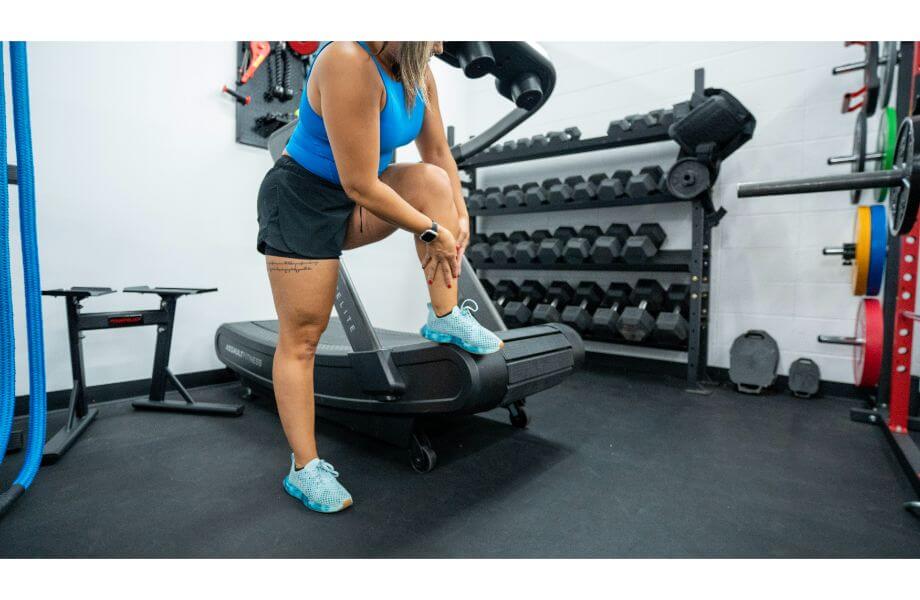
High-Impact Activities
Running on hard surfaces or at an incline can increase the strain on your front lower legs and increase your risk for shin splints.
Poor Running Form
Poor running form can add up over time and increase your risk of shin splints. When it comes to shin splints, your foot strike plays a major role in keeping them at bay. Overpronation (ankles roll in) or supination (running on the outside edge of your feet) can cause your front leg muscles to overcompensate to stabilize your feet.
Overuse
Our bodies have limits. Doing too much too soon, or without proper recovery, can lead to shin splints, among other running injuries. Runners just starting out can especially fall into the shin splint trap by bumping up their mileage too quickly. A study of athletes with shin splints actually showed that a graded training program provided the same results as a graded training program plus stretching or a graded training program plus compression socks, revealing the importance that gradual mileage ramping has on the prevalence of shin splints.
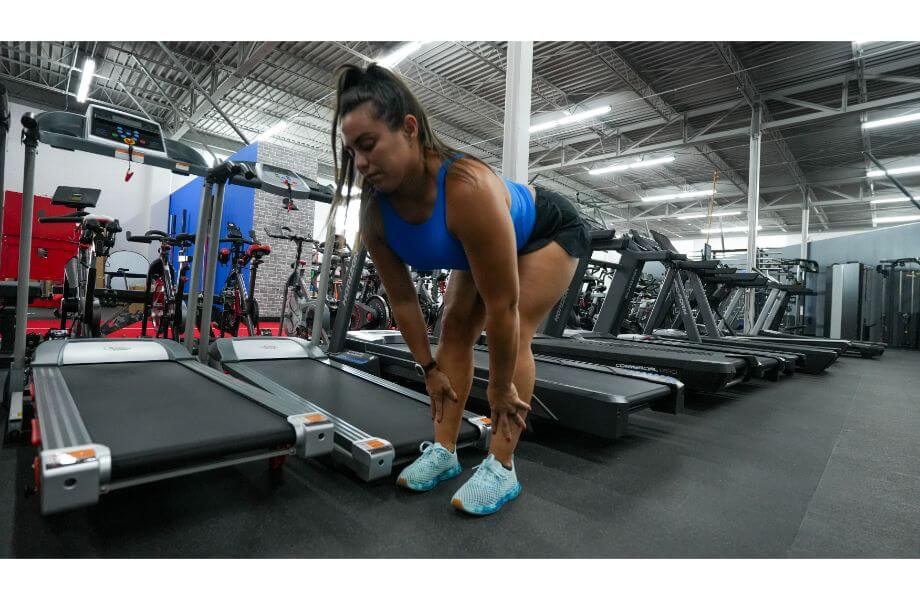
How to Avoid Shin Splints on a Treadmill
According to Anthony O’Reilly, CPT and staff writer here at GGR, the easiest way to avoid shin splints on a treadmill is to avoid any sudden jumps in physical activity. “Gradually increase the intensity of your run over a few minutes—as well as your mileage over time—to give your body time to adjust to the demands you’re putting on it,” he explains. “Stretching can also help your legs limber up before a run.”
Anthony also adds that footwear is just as important. “If your shoes are starting to fall apart, it might be time to replace them and find something a little more supportive.”
Let’s dig a little deeper into Anthony’s good advice:
1. Pick the Correct Shoes
Picking the right running shoes can make a world of difference in your training and help prevent those pesky shin splints. If a shoe is too tight, it can restrict blood flow to your feet…and you kind of need that. On the other hand, if a shoe is too loose, your foot strike lacks the support it needs.
Your podiatrist can help you choose the right shoes and even help determine if you would benefit from orthotic insole inserts for additional arch support. You can also visit a local running shop to get a gait analysis and shoe fitting by a professional there.
2. Vary Your Workouts
It’s essential to use your off days from running to catch up on much-needed rest, but you might also include cross-training as a form of active recovery on other days. Try low-impact aerobic exercises such as swimming or biking.
3. Properly Warm Up
A proper warmup is critical in keeping your workouts safe and successful. Cold muscles lack the flexibility and blood flow necessary to reach their full potential, so gradually increase the intensity of your run and consider including these stretches in your warmup routine:
- Soleus stretch
- Facing a wall, take a step back with one leg while bending the front knee. Keep your heel on the ground.
- You should notice a stretch in the lower calf. Lean into the stretch to reach the rest of the calf muscle.
- Hold for 15 to 30 seconds.
- Switch legs and repeat.
- Towel calf stretch:
- Sit on the floor, placing your feet out in front of you.
- Wrap a towel or yoga strap around the ball of one foot.
- Gently pull the towel, flexing your toes and ankle up and off the ground.
- Hold for 15 to 30 seconds.
- Switch sides and repeat with the other calf muscle.
4. Don’t Overdo It
You know your body better than anyone else could. Trust yourself when your body is asking for rest. As athletes, we’re a determined group; sometimes, that determination can distract us from our need for rest. Pushing our bodies past their limits only gets in the way of our fitness goals, so don’t forget to slow down every now and then.
5. Strengthen Your Shins
Strength training is critical for preventing shin splints. Include exercises like heel and toe raises to help prevent shin pain.
6. Recover Properly
Don’t wait for leg pain to come knocking before you allow yourself to rest. Work proper recovery into your training schedule to stay pain-free and avoid pesky running injuries.
If you notice pain outside of normal fatigue or soreness, consider meeting with a sports medicine specialist who can guide you through proper therapy.
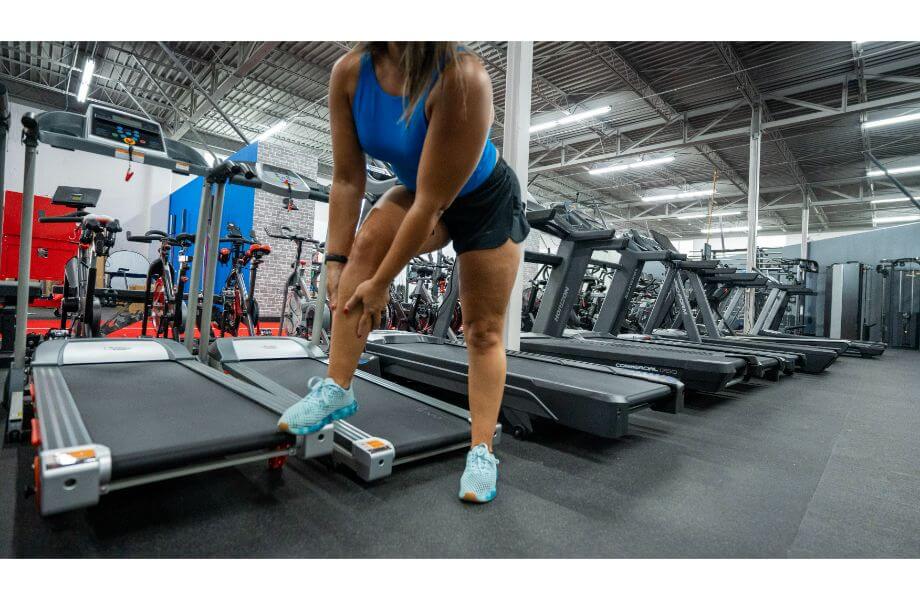
How to Treat Shin Splints
If you’re dealing with shin splints, you can take a few steps to treat your shin pain at home. First, you might consider backing off from your training schedule to allow your body to heal and recover.
You can also reduce your pain by consistently icing your lower legs after you run. Apply an ice pack to your legs several times throughout the day for approximately 20 minutes.
Ever tried compression gear? Compression socks and compression bandages can help reduce swelling and pain related to shin splints.
Lastly, talk with your healthcare provider about possible medication needs. For example, anti-inflammatory meds, such as ibuprofen and aspirin, can help reduce swelling and relieve pain.
Final Thoughts
Shin splints are no fun. They’re a relatively common running injury, and chances are, many of us have experienced them. Thankfully, they are preventable and relatively easy to treat. However, if left unchecked, they do run the risk of developing into something more serious.
- Shin splints can be caused by high-impact activities, poor running form, and overuse.
- Symptoms of shin splints include tenderness, soreness, or pain on either side of the tibia.
- Running in the right shoes can help prevent shin splints.
- Strength training can help prevent lower leg pain.
- Always include a warm-up before your runs, and don’t skip out on proper rest and recovery.
- Ice and rest are two effective methods for treating shin splints, but if the pain persists, speak with a podiatrist or sports medicine specialist.
How to Prevent Shin Splints on a Treadmill FAQs
Here are some commonly asked questions about preventing shin splints on a treadmill.
Why do I get shin splints from the treadmill?
Shin splints can be caused by several factors. Maybe the cushioning in your shoes is worn out, and it’s time for a new pair. Perhaps your body doesn’t have time to adjust to the demands of your workout without proper warm-up. Or maybe you’ve been hitting it hard, and it’s simply time for some rest.
Why do my shins hurt when I walk on the treadmill?
Treadmills mimic downhill running, putting more pressure on the tibialis anterior, which can eventually cause shin splints when running or walking.
How can I run on a treadmill without hurting my legs?
To avoid leg pain while on a treadmill, make sure you’re running in the right shoe, and you have proper running form. The biomechanics of your running form play a significant role in the demand put on your muscles, connective tissues, and bones.
Is it OK to run with shin splints?
Although you might be tempted to push through the pain and run with shin splints, it’s probably not a good idea. Unfortunately, continuing to put your body under the same stress that triggered your injury will likely only worsen your pain. Consider low-impact cross-training exercises such as swimming or biking instead.
How do you stretch your shins before running on a treadmill?
Taking time to stretch before your run is a great way to prep your body for an awesome workout. You can include stretches like the soleus stretch, the towel calf stretch, and the ever-so-simple seated calf stretch to help loosen your shins before hitting the treadmill.


